ICMS Summer School and Workshop: Geometric representation theory and
low-dimensional topology.
June 3rd-7th, 10th-14th 2019
Below is an archive of the summer school and workshop which was held
at the ICMS in June 2019. Below you can find the complete program for
both events, notes for the summer school talks, and videos for talks both
weeks.
Full videos of all workshop talks are available here. Full videos of all summer school talks are available here.
Photos from the conference dinner are available
here.
Scientific Organisers
- Dan Freed, University of Texas, Austin
- David Jordan, University of Edinburgh
- Peter Samuelson, University of California, Riverside
- Olivier Schiffmann, University of Paris-Sud, Orsay
The aim of this workshop is to bring together researchers in
topological field theory, geometric representation theory, mathematical
physics, and algebraic combinatorics to report on recent progress and
open questions at the intersection of these fields. In recent years,
several independent research groups have raised the possibility of new 3-
and 4-dimensional topological field theories tying together
Khovanov-Rozansky knot homology, double affine Hecke algebras and
elliptic Hall algebras, super Yang-Mills theory, Betti quantum geometric
Langlands, and Hilbert schemes. As each of these topics constitutes a
specialist field in its own right, it is essential that we bring
researchers together to exchange ideas and insights.
This workshop is organised by the International Centre for Mathematical
Sciences in partnership with the European Research Council and the
National Science Foundation. It is partially supported by the NSF,
Division of Mathematical Sciences.
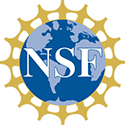
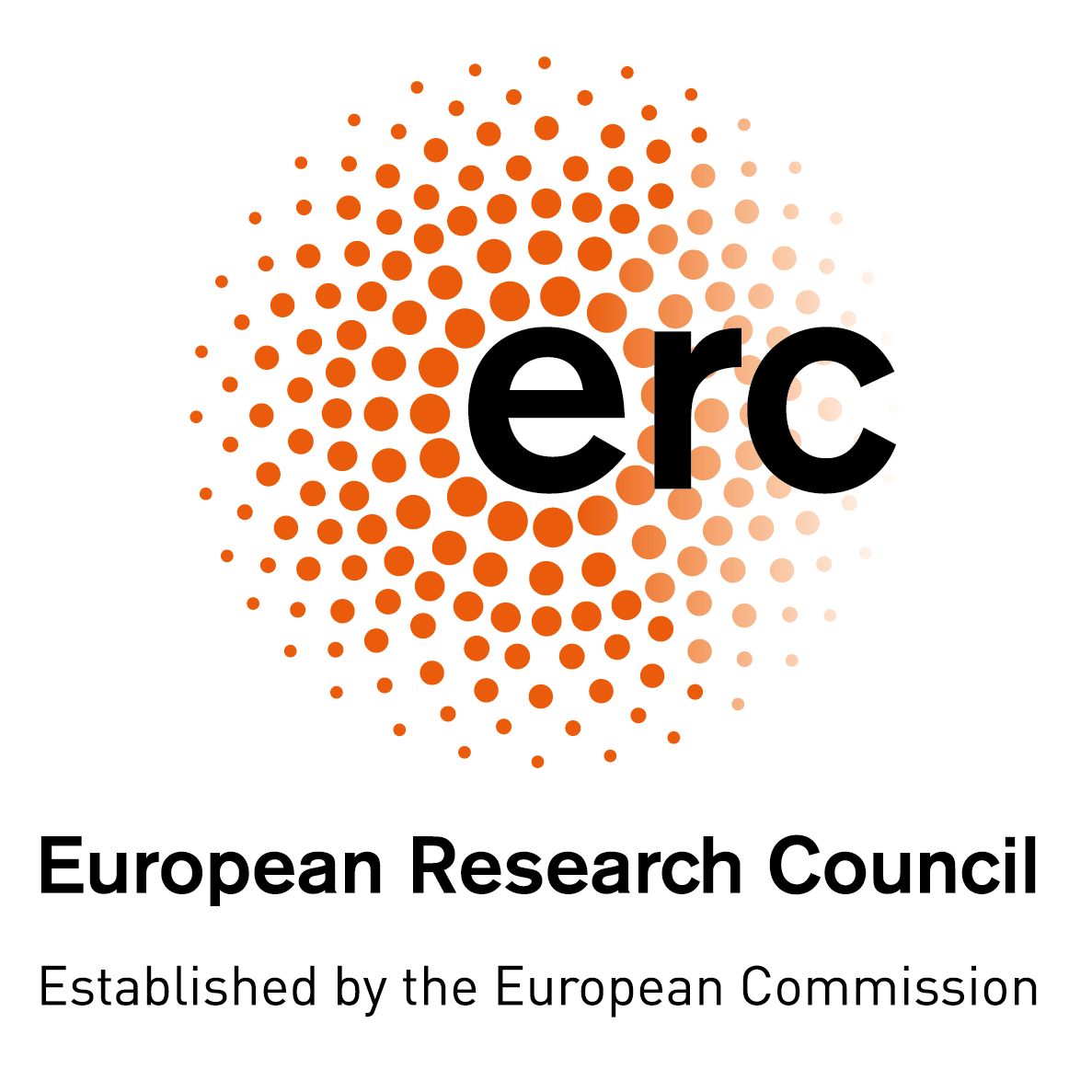
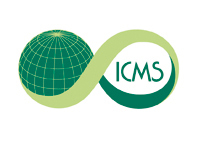
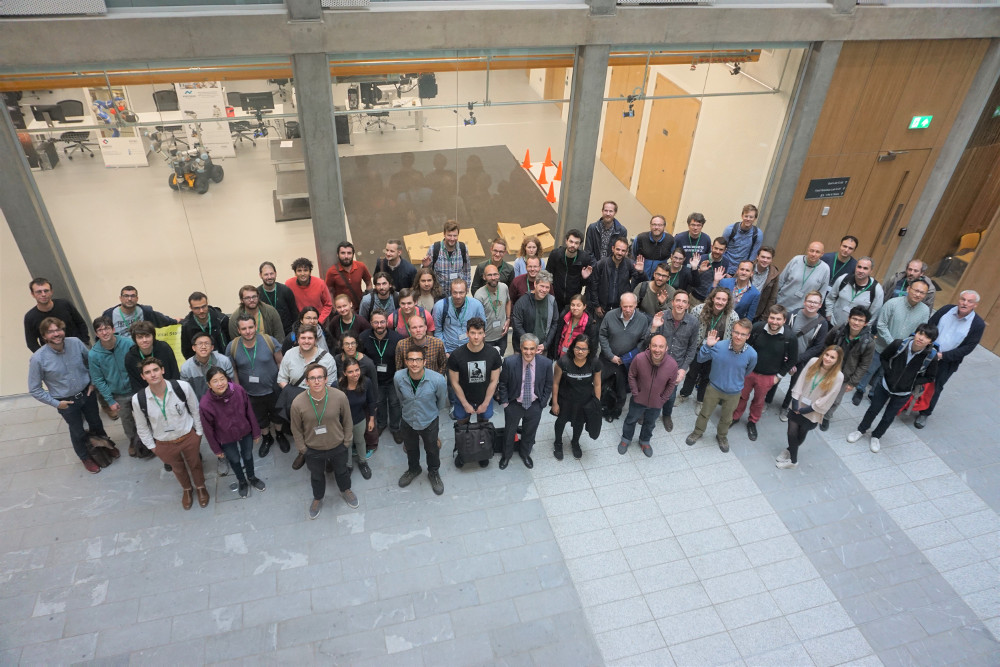
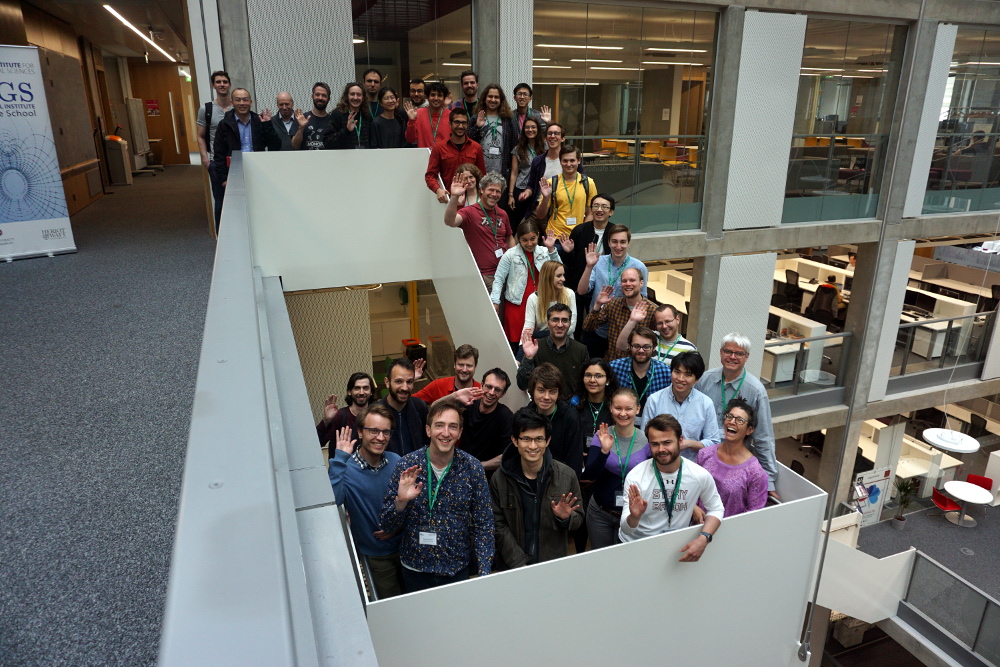
Workshop programme:
The programme is shown below. Skip to the bottom for the summer
school programme.
Monday 10 June 2019
09:00-09:45 |
Registration & coffee |
09:45-10:00 |
Welcome & opening |
10:00-11:00 |
Catharina Stroppel (University of
Bonn)
DAHA actions on fusion rings
In this talk I will describe fusion algebras arising from quantum
groups at roots of unity. After a short
overview of the general theory we study the rings in more details. The
goal is to construct actions of
certain double affine Hecke algebras on these algebras. |
11:10-12:10 |
Mina Aganagic (University of
California, Berkeley)
Knot categorification from geometry and mirror symmetry, via
string theory
I will describe how two geometric approaches to categorification
of RTW invariants of knots emerge
from string theory. The first approach is based on a category of B-type
branes on resolutions of slices
in affine Grassmannians. The second is based on a category of A-branes in
a Landau-Ginzburg theory.
The relation between them is two dimensional (equivariant) mirror
symmetry. String theory also
predicts that a third approach to categorification, based on counting
solutions to five dimensional
Haydys-Witten equations, is equivalent to the first two. This talk is
mostly based on joint work with
Andrei Okounkov. |
12:10-14:00 |
Lunch |
14:00-15:00 |
Sergei Gukov (California
Institute of Technology)
New TQFTs from DAHA
No abstract provided. |
15:00-16:00 |
Tea & coffee |
16:00-17:00 |
Claudia Scheimbauer (Norwegian
University of Science and Technology)
En-algebras, extended topological field
theories and dualizability
E_n -algebras, extended topological field theories and
dualizability
The Cobordism Hypothesis provides a beautiful interplay between extended
topological field theories
and dualizability conditions, allowing for a conceptual explanation of
certain finiteness conditions
appearing in representation theory, and, vice versa, a geometric
understanding of algebraic objects.
In turn, E_n -algebras, which are algebras for the little disks operad,
(e.g. associative algebras and
quantum groups) provide important examples. I will explain why every E_n
-algebra leads to a
categorified topological field theory using dualizability arguments.
Furthermore, I will explore
extensions and further directions. |
17:00-19:00 |
Wine & whisky reception |
Tuesday 11 June 2019
09:00-10:00 |
Sam Gunningham (University of
Edinburgh)
q-Character sheaves and Springer theory
The category of equivariant D_q(G)-modules sits at the interface
of low-dimensional topology and
geometric representation theory. It appears naturally in the context of
factorization homology and
skein theory, but it may also be thought of as a q-deformation of the
category of equivariant modules
for the ring D(G) of differential operators on a complex reductive group
G. In this talk I will survey
various aspects of an ongoing program to adapt the powerful tools
available in the D-module setting
(e.g. character sheaves, parabolic induction, Springer theory) to the
realm of D_q-modules. As an
example, I will present a new derivation of a recent result of Carrega and
Gilmer on the 9-
dimensionality of the skein module for a 3-torus. This is joint work with
(combinations of) David
Jordan, Monica Vazirani, and Pavel Safronov. |
10:00-10:30 |
Tea & coffee |
10:30-11:30 |
Adrien Brochier (IMJ-PRG,
Université Paris-Diderot)
Quantization of character varieties, topological field
theories and the Riemann-Hilbert correspondence
I will give a gentle exposition of some recent work joint with D.
Ben-Zvi, D. Jordan and N. Snyder on
quantization of character varieties of surfaces, using the language of
topological field theories. I will
first recall various points of view on the representation category of
quantum groups and the
associated topological invariants. I will then explain how, using the
formalism of factorization
homology, one can construct and compute explicitly a certain
category-valued invariant of surfaces.
This provides a canonical quantization of the Atiyah--Bott-Goldman Poisson
structure on character
varieties, unifies and generalizes a number of previously known
constructions and has interesting
applications in representation theory and low-dimensional topology. Time
permitting, I will mention
a work in progress on a higher genus analog of the Kohno-Drinfeld theorem,
using this formalism to
compute explicitly the monodromy of certain differential equations arising
in conformal field theory.
This can be thought of as a quantization of the Riemann-Hilbert
correspondence. |
11:40-12:40 |
Harold Williams (University of
California, Davis)
Canonical bases for Coulomb branches
Following work of Kapustin-Saulina and Gaiotto-Moore-Neitzke it is
anticipated that the expectation
values of irreducible half-BPS line defects define a canonical basis in
the quantized Coulomb branch
of a 4d N=2 field theory. In this talk we propose a mathematical
definition of the category of such
defects, hence of the associated canonical basis, in the case of N=2 gauge
theories of cotangent
type. The form of the definition is a finite length t-structure on the DG
category of coherent sheaves
on a derived enhancement of the space of triples introduced by
Braverman-Finkelberg-Nakajima. This
heart of this t-structure is a non-Noetherian extension of the category of
perverse coherent sheaves
on the affine Grassmannian, to which it specializes in the case of pure
N=2 gauge theory. It is
expected that these categories categorify the cluster algebra associated
to the BPS quiver of the
theory, which we confirm in various examples. This is work in progress
with Sabin Cautis. |
12:40-14:30 |
Lunch |
14:30-15:30 |
Anton Mellit (University of
Vienna)
$A_{q,t}$ algebra as a partially symmetrized DAHA and
computations of knot invariants
$A_{q,t}$ algebra as a partially symmetrized DAHA and computations
of knot invariants
$A_{q,t}$ algebra arose from my work with Erik Carlsson on the shuffle
conjecture. I will explain how
this algebra can be constructed naturally from a topological
(skein-theoretic) point of view. Similarly
to the way representation theory of quantum groups $gl_N$ can be
interpolated in the limit
$N\to\infty$, the $A_{q,t}$ algebra arises if one attempts to interpolate
the symmetric power of the
standard representation $Sym_M$ in the limit $M\to\infty$. Then I will
show how the algebra was
used to compute the triply graded homology (superpolynomials) of torus
knots.
|
15:30-16:00 |
Tea & coffee |
16:00-17:00 |
Du Pei (Caltech, Aarhus
University)
New TQFTs from DAHA (Part 2)
We will continue to study DAHA and its representations via quantum
physics, focusing on new
connections with mirror symmetry and skein theory.
|
Wednesday 12 June 2019
09:00-10:00 |
John Francis (Northwestern
University)
Moduli of stratifications and factorization homology
The Ran space Ran(X) is the space of finite subsets of X,
topologized so that points can collide. Ran
spaces have been studied in diverse works from Borsuk–Ulam and Bott, to
Beilinson–Drinfeld,
Gaitsgory–Lurie and others. The alpha form of factorization homology takes
as input a manifold or
variety X together with a suitable algebraic coefficient system A, and it
outputs the sheaf homology
of Ran(X) with coefficients defined by A. Factorization homology
simultaneously generalizes singular
homology, Hochschild homology, and conformal blocks or observables in
conformal field theory. This
alpha form of factorization homology has applications to the study of
mapping spaces in algebraic
topology, bundles on algebraic curves, and perturbative quantum field
theory. There is also a beta
form of factorization homology, where one replaces the Ran space with a
moduli space of
stratifications, designed to overcome certain strict limitations of the
alpha form. The key notion is
that of a constructible bundle: in terms of its functor of points, a
K-point of this moduli space is a
constructible bundle over K. One application is to proving the Cobordism
Hypothesis, after Baez–
Dolan, Costello, Hopkins–Lurie, and Lurie. This is joint work with David
Ayala. |
10:00-10:30 |
Tea & coffee |
10:30-11:30 |
Constantin Teleman (University
of California, Berkeley)
Coulomb branches, passée topology and non-polarizable
matter
No abstract provided. |
11:40-12:40 |
Alexei Oblomkov (University of
Massachusetts)
Dualisable link homology and 3D TQFT
This talk is based on the joint work with Lev Rozansky. It is elementary
to see that the HOMFLYPT
polynomial of a knot K $P_K(a,q)$ is palindromic: $P_K(a,q)=P_K(a,1/q)$.
It was conjectured by
Dunfield-Gukov-Rasmussen that the Poincare polynomial
$\mathcal{P}_L(a,q,t)$ of the HOMFLYPT
homology has similar property. In my talk I explain a proof of the
conjecture that relies on the
construction 3D TQFT that provides a mathematical model for 3D sigma model
of Kapustin-Rozansky-
Saulina. As by-product of our construction we find an interpretation of
the knot homology as v space
of sections of a particular sheaf on the Hilbert scheme of points on the
plane as well as another
explanation why the skein algebra of torus is an elliptic Hall
algebra. |
12:40-12:50 |
Group photo |
12:50 onwards |
Free afternoon |
19:00 |
Workshop dinner at Playfair Library, Old College,
South Bridge |
Thursday 13 June 2019
09:00-10:00 |
Fabian Haiden (University of
Miami)
Legendrian skein algebras and Hall algebras
This is a report on work in progress in understanding the relation
between skein algebras and Hall
algebras of Fukaya categories, motivated by a recent paper of
Cooper-Samuelson. Another motivation
is the problem of defining Hall algebras for Z/2-graded categories, and
the limiting case q=1. The
main novelty is to assign to a Lagrangian submanifold a positive linear
combination of isomorphism
classes of objects in the Fukaya category (i.e. a “random
object”). |
10:00-10:30 |
Tea & coffee |
10:30-11:30 |
Yuri Berest (Cornell
University)
Perverse sheaves, contact homology and cubical
approximations
Knot contact homology is an interesting geometric invariant of a knot K in
R3 defined by Floer-
theoretic counting of pseudoholomorphic disks in the sphere conormal
bundle of K in T R3. In its
simplest form, this invariant was introduced by L. Ng and has been
extensively studied in recent years
by means of symplectic geometry and topology. In this talk, we will give a
purely algebraic
construction of knot contact homology based on the homotopy theory of
(small) dg categories. For
a link L in R3, we define a dg k-category AL with a distinguished object,
whose quasi-equivalence
class is a topological invariant of L. In the case when L is a knot, the
endomorphism algebra of the
distinguished object of AL coincides with a geometric dg algebra model of
the knot contact homology
of L constructed by Ekholm, Etnyre, Ng and Sullivan (2013). The input of
our construction is a natural
action of the Artin braid group Bn on the category of perverse sheaves on
a two-dimensional disk
with singularities at n marked points, studied by Gelfand, MacPherson and
Vilonen (1996). Time
permitting, we will also discuss a possible generalization of contact
homology to arbitrary spaces
using the homotopy theory of cubical diagrams of simplicial sets. |
11:40-12:40 |
Noah Snyder (Indiana
University)
Local topological field theories with values in Morita
categories
The ordinary Morita symmetric monoidal 2-category has objects that are
algebras over a field k, 1-
morphisms from A to B are A-B bimodules, and 2-morphisms are bimodule
maps, and the monoidal
structure is giving by tensoring over k. More generally one can consider
an Morita (r+m)-category
whose objects are E_r-algebras in some m-category, 1-morphisms are
E_{r-1}-bimodules, etc. Some
notable specific examples are the Morita 3-category of monoidal categories
and the Morita 4-
category of braided monoidal categories. An n-dimensional local
topological field theory is a
symmetric monoidal functor from a bordism n-category to some target
n-category. The Hopkins-
Lurie-Baez-Dolan cobordism hypothesis says that such TFTs are classified
in terms of n-dualizable
objects in the target. The goal of this talk is to give a survey of what
is known about n-dualizability
of objects in Morita categories. This will touch on results of
Calaque-Scheimbauer, Haugseng,
Johnson--Freyd-Scheimbauer, Gwilliam-Scheimbauer,
Brandenburg-Chirvasitu-Johnson--Freyd, and
Morrison-Walker, and focus on my joint work with Douglas-Schommer--Pries
and Brochier-Jordan on
dualizability of tensor categories and braided tensor categories. |
12:40-14:30 |
Lunch |
14:30-15:30 |
Dimitri Wyss (Sorbonne
Université)
Non-archimedean integrals on the Hitchin fibration
Non-archimedean or p-adic integration is an analytic tool to study
rational points of algebraic
varieties over finite fields. Dener-Loser and Batyrev have realized that
this can be used in some cases
to study the topology of complex algebraic varieties. We apply this idea
to the moduli spaces of G-
Higgs bundles M(G) and show in particular, that for a pair of Langlands
dual groups the
corresponding moduli spaces have the same non-archimedean volume. As a
geometric application
we find an agreement of (stringy) Hodge numbers of M(SLn) and M(PGLn) as
predicted by a
conjecture of Hausel-Thaddeus. For general G this leads to a new proof of
the geometric stabilization
theorem, a key ingredient in Ngô's proof of the fundamental lemma. This is
joint work with Michael
Groechenig and Paul Ziegler. |
15:30-16:00 |
Tea & coffee |
16:00-17:00 |
Pavel Safronov (University of
Zurich)
R-matrices with a spectral parameter via shifted Poisson
structures
Constant (dynamical) R-matrices have a categorical interpretation in terms
of braided monoidal
categories equipped with a monoidal forgetful functor to the category of
vector spaces (Harish—
Chandra bimodules). In the first part of the talk I will review analogous
interpretations of classical r-
matrices in terms of shifted Poisson structures. In the second part I will
describe a conjectural
interpretation of classical (dynamical) r-matrices with a spectral
parameter (describing Yangians,
quantum affine algebras and elliptic quantum groups) in terms of shifted
Poisson structures and their
quantizations. |
Friday 14 June 2019
10:00-11:00 |
Ivan Cherednik (University of
North Carolina at Chapel Hill)
DAHA superpolynomials for iterated links
It will be mostly an introduction to our long paper with Ivan Danilenko on
DAHA superpolynomials
of (colored) torus iterated links. Connections with the HOMFLY-PT
polynomials and the Khovanov-
Rozansky stable reduced polynomials will be briefly discussed. The theory
of the latter is mostly
developed for uncolored knots, especially in the reduced setting. Also,
DAHA superpolynomials satisfy
the super-duality (a theorem) and have other remarkable symmetries, which
are generally difficult to
approach topologically. Though the most clarifying proof of the
super-duality for algebraic links is
via the so-called motivic superpolynomials of plane curve singularities,
conjecturally coinciding with
the DAHA ones. The super-duality becomes then the functional equation, a
fundamental
development, which may have physics implications. The motivic direction
inspired the Riemann
hypothesis for DAHA superpolynomials (to be touched a bit at the end), but
it will be omitted in this
talk. We will focus on the DAHA theory of colored iterated links,
explaining the main steps and
providing some examples. |
11:00-11:30 |
Tea & coffee |
11:30-12:30 |
Tudor Dimofte (University of
California, Davis)
3d mirror symmetry and HOMFLY-PT homology
Recently, Gorsky-Negut-Rasmussen and Oblomkov-Rozansky proposed
constructions of HOMFLY-PT
link homology related to coherent sheaves on Hilbert schemes.
Oblomkov-Rozansky explained how
their construction was realized in several different physical systems,
including (most relevantly for
this talk) 3d supersymmetric gauge theories. I will discuss how a duality
of 3d gauge theories known
as 3d mirror symmetry --- whose mathematical/categorical implications are
only starting to be
explored --- acts on the setups above. The result is a very different, "A
type" construction of link
homology, related to cohomology of affine Springer fibers and to Hilbert
schemes of points on
singular curves. The talk will attempt to be fairly broad, with no prior
technical knowledge assumed.
Based on work with N. Garner, J. Hilburn, A. Oblomkov, and L. Rozansky;
and related work of N.
Garner and O. Kivinen. |
12:30-14:30 |
Lunch |
14:30-15:30 |
Pavel Etingof (MIT)
Short star-products for filtered quantizations
Let $A$ be a filtered Poisson algebra with Poisson bracket
$\lbrace{,\rbrace}$ of
degree $-2$. A {\it star product} on $A$ is an associative product $*:
A\otimes A\to A$ given by
$$a*b=ab+\sum_{i\ge 1}C_i(a,b),$$ where $C_i$ has degree $-2i$ and
$C_1(a,b)-
C_1(b,a)=\lbrace{a,b\rbrace}$. We call the product * {\it even} if
$C_i(a,b)=(-1)^iC_i(b,a)$ for all
$i$, and call it {\it short} if $C_i(a,b)=0$ whenever $i>{\rm min}({\rm
deg}(a), {\rm deg}(b))$.
Motivated by three-dimensional $N=4$ superconformal field theory, In 2016
Beem, Peelaers and
Rastelli considered short even star-products for homogeneous symplectic
singularities (more
precisely, hyperK\""ahler cones) and conjectured that that they exist and
depend on finitely many
parameters. We prove the dependence on finitely many parameters in general
and existence for a
large class of examples, using the connection of this problem with zeroth
Hochschild homology of
quantizations suggested by Kontsevich. Beem, Peelaers and Rastelli also
computed the first few terms
of short quantizations for Kleinian singularities of type A, which were
later computed to all orders by
Dedushenko, Pufu and Yacoby. We will discuss some generalizations of these
results. This is joint
work with Eric Rains and Douglas Stryker. |
15:40-16:40 |
Andrei Negut (MIT)
The PBW basis of the quantum toroidal algebra
We give a presentation of U_{q,q'}(gl_n^^) via generators and relations,
akin to the one developed
by Burban-Schiffmann in the elliptic Hall algebra (which would correspond
to n=1). One hopes that
our presentation could help define a version of the elliptic Hall algebra
for all n, although this is still
only a dream. |
16:40 |
End of workshop |
Summer school programme:
Monday 3 June 2019
09:00-09:45 |
Registration & coffee |
09:45-10:00 |
Welcome & opening |
10:00-11:00 |
Hiro Lee Tanaka (Texas State
University)
Factorization homology, infinity-categories, and topological
field theories I[Notes]
These lectures will serve as an introduction to the topics in the title.
Factorization homology is a
method for producing field theories out of rich algebraic gadgets; for
example, it simultaneously
yields invariants of manifolds and of higher algebras. We will also give
peeks into the language of
infinity-categories, which are necessary in one guise or another to
articulate the rich spaces that
cohere operations. Topological field theories will also be presented, but
from a mathematics-centred
(rather than physics-centred) perspective. The (ambitious) goal is to give
examples that illustrate how
these notions help to organize phenomena in representation theory.
|
11:00-12:00 |
Monica Vazirani (University of
California, Davis)
Hecke algebras and representation theory I [Notes]
The double affine Hecke algebra (DAHA) was invented by Cherednik
in order to study (symmetric)
Macdonald polynomials. This gave rise to the nonsymmetric
Macdonald polynomials which gives a
basis of (Laurent) polynomials in X's. The X's form a “third" of
the DAHA in its triangular
decomposition. They are also a weight basis for polynomials in
Y's, which comprise another third. The
middle third is the finite Hecke algebra, which in type A deforms
the symmetric group Sn. The X's
also form an irreducible and faithful representation of the DAHA
for generic parameters q; t. One can
generalize from here to studying other irreducible
representations (irreps) that admit a Y -weight
basis - so-called Y-semisimple or calibrated representations. Or
one can study irreps on which the Y's
act locally finitely - analogue of Category O. How can we
understand, study, classify, or construct
such irreps? This 4-hour course will focus on type A. We will
start with some of the more classical
representation theory and combinatorics for the symmetric group
Sn, the (extended) affine symmetric
group, Hecke algebras as their q-deformations, and possibly other
ways Hecke algebras “arise in
nature." We will examine the structure of affine Hecke algebra
(AHA) representations, particularly
using the functors of induction and restriction. Then we shall
apply these tools toward DAHA
representations. As time and interest permits, topics that may be
covered include: Y –semisimple
irreps, finite dimensional irreps, analogues of Schur-Weyl
duality, monomial expansion of Macdonald
polynomials, the spherical DAHA (possibly with connections to the
elliptic Hall algebra or skein
modules), double a affine braid group, orthogonal polynomials,
action of SL2(Z) on DAHA. |
12:00-13:30 |
Lunch |
13:30-14:30 |
Tina Kanstrup (University of
Massachusetts Amherst)
Knot homologies and matrix factorizations I [Notes]
One of the most famous link invariants is Khovanov-Rozansky
triply graded homology. Its definition
is completely algebraic and notoriously hard to compute. It has
been conjectured by Gorsky, Negut
and Rasmussen that it can also be computed as cohomology of
certain coherent sheaves on the flag
Hilbert scheme. A link invariant of a similar nature has been
constructed by Oblomkov and Rozansky
in terms of matrix factorizations. In this lecture series we will
describe these different approaches and
reformulate the work of Oblomkov and Rozansky into the setting of
the conjecture using work of
Arkhipov and Kanstrup. Time permitting we will relate this to the
work of Ben-Zvi and Nadler et al.
in derived algebraic geometry. |
14:30-15:00 |
Tea & coffee |
15:00-16:00 |
Pavel Safronov (University of
Zurich)
Shifted Poisson structures in representation theory I
[Notes]
These talks are devoted to the theory of symplectic and Poisson structures
on stacks developed by
(Calaque—)Pantev—Toen—Vaquie—Vezzosi. In the first lecture I will
introduce the language of
derived algebraic geometry and define shifted symplectic structures. In
the next lecture I will sketch
a relationship with shifted Poisson structures and will spend the rest of
the time on examples relevant
for representation theory. These include: the Kirillov—Kostant—Souriau
symplectic structure on
coadjoint orbits, the Grothendieck—Springer resolution, Poisson—Lie
structures on simple groups,
reflection equation algebras, Sklyanin and Feigin—Odesskii algebras.
|
16:00-17:00 |
Gregor Masbaum (CNRS)
Introduction to Skein theory
Skein modules were originally introduced to generalize the celebrated
Jones polynomial of classical
knots to links in other three-manifolds. They also appear naturally as
quantizations of character
varieties. The aim of this talk is to give an introduction to skein theory
for non-experts and hopefully
discuss some interesting open questions as well.
|
17:00-19:00 |
Wine & beer reception with pizza at
18:00 |
Tuesday 4 June 2019
09:00-10:30 |
Hiro Lee Tanaka (Texas State
University)
Factorization homology, infinity-categories, and topological
field theories II |
10:30-11:00 |
Tea & coffee |
11:00-12:30 |
Pavel Safronov (University of
Zurich)
Shifted Poisson structures in representation theory
II |
12:30-14:00 |
Lunch |
14:00-15:00 |
Jose Simental Rodriguez
(University of California, Davis)
Rational double affine Hecke algebras [Notes]
Rational Cherednik algebras, or rational DAHA, are a degeneration of DAHA
introduced by Etingof
and Ginzburg around the year 2000. We will explore the precise connection
between RCA and DAHA,
and review some of the basic structural and representation theoretical
properties of the RCA. Time
permitting, we will also see the connection between the type A RCA and the
Hilbert scheme of points
in the plane.
|
15:00-15:30 |
Tea & coffee |
15:30-17:00 |
Tina Kanstrup (University of
Massachusetts Amherst)
Knot homologies and matrix factorizations II |
17:30 |
Doors open for public lecture |
18:00-19:00 |
Public lecture by Dan Freed
(University of Texas, Austin)
Geometry from afar [Photos] |
19:00-20:00 |
Wine reception |
Wednesday 5 June 2019
09:00-10:00 |
Monica Vazirani (University of
California, Davis)
Hecke algebras and representation theory II |
10:00-10:30 |
Tea & coffee |
10:30-12:00 |
Tina Kanstrup (University of
Massachusetts Amherst)
Knot homologies and matrix factorizations III |
12:00-13:30 |
Lunch |
13:30-14:30 |
Gus Schrader (Columbia
University)[Notes]
The cluster approach to character varieties
It was shown by Fock and Goncharov that certain character
varieties parametrizing framed SL(n)-local
systems on surfaces bear the structure of cluster Poisson
varieties. This observation allowed them to
quantize these character varieties, and conjecture that this
quantization satisfies the locality property
of TQFT with respect to cutting and gluing of surfaces. I will
discuss their construction, and explain
the idea of the proof of their conjecture obtained in joint work
with A. Shapiro. |
14:30-15:30 |
Kostiantyn Tolmachov (Perimeter
Institute and University of Toronto)
Knot homologies and geometric Hecke
categories
I will describe geometric categorifications of the Hecke algebras
coming from representation theory,
and survey how the knot homologies are visible from the point of
view of these categorifications,
following the work of Webster and Williamson. Time permitting, I
will also talk about the recent
progress in relating the coherent categorification of the affine
Hecke algebra with the constructible
categorification of the finite Hecke algebra in type A, joint
with Bezrukavnikov. |
15:30-16:00 |
Tea & coffee |
16:00-17:30 |
Pavel Safronov (University of
Zurich)
Shifted Poisson structures in representation theory
III |
Thursday 6 June 2019
09:00-10:30 |
Hiro Lee Tanaka (Texas State
University)
Factorization homology, infinity-categories, and topological
field theories III |
10:30-11:00 |
Tea & coffee |
11:00-12:00 |
Juliet Cooke (University of
Edinburgh)
Skein categories[Notes]
In this talk we will introduce a categorical analogue of skein
algebras based on coloured ribbon
tangles. We shall then see how these skein categories satisfy
excision and can be treated as k-linear
factorisation homology theories of surfaces. |
12:00-13:00 |
Alexander Shapiro (University of
Edinburgh)
Around character varieties in 50 minutes
There are four main approaches to character varieties and their
quantization: via skein algebras, via
Alekseev – Grosse – Schomerus quantization of Fock – Rosly
Poisson structure, via cluster algebras
due to Fock and Goncharov, and via factorization homology due to
Ben-Zvi – Brochier – Jordan. I will
discuss how the latter three approaches are related to each
other. The talk will be based on a joint
work in progress with D. Jordan, I. Le, and G. Schrader. |
13.00-14:30 |
Lunch |
14:30-15:30 |
Quoc Ho (Institute of Science
and Technology Austria (IST Austria)
Arithmetic applications of factorization
homology
In recent years, the theory of factorization homology has emerged
as a powerful tool to study
problems in diverse areas of mathematics, including higher
category theory, representation theory,
manifold topology, and number theory (over function fields), etc.
The last two topics will be the
main focus of the talk. More specifically, we will explain how
factorization homology can help clarify
various links between homological stability phenomena and
problems in arithmetic statistics. A
review of the basics of factorization homology will also be
provided |
15:30-16:00 |
Tea & coffee |
16:00-17:00 |
Monica Vazirani (University of
California, Davis)
Hecke algebras and representation theory III |
Friday 7 June 2019
09:00-10:00 |
Alexandre Minets (IST
Austria)
Cohomological Hall algebras and sheaves on
surfaces [ Notes]
Cohomological Hall algebras (COHAs) where introduced by
Kontsevich-Soibelman and SchiffmannVasserot
about 10 years ago, and since then proved to be a useful language for
unifying a number
of constructions in geometric representation theory. I will start by
explaining less technically
challenging notion of Ringel-Hall algebra, and continue with the
definition and examples of COHAs.
If time permits, I will sketch some recent results about their action on
cohomology of moduli of
coherent sheaves on surfaces.
|
10:00-10:30 |
Tea & coffee |
10:30-11:30 |
Nicolle Gonzalez (University of
California)
The higher structure of the Heisenberg and Clifford
algebras
An important role in the structure of CFT is played by vertex operators.
Categorifying these operators
is, thus, a natural step towards understanding the higher structure of
CFT. As a motivating example,
I will explain a possible approach via the categorification of the vertex
operators which relate the
actions of the Heisenberg and Clifford algebras on Fock space, known as
the boson-fermion
correspondence. In the process, I will briefly discuss Khovanov's
Heisenberg category and some of the
basics of diagrammatic categorification.
|
11:30-12:30 |
Monica Vazirani (University of
California, Davis)
Hecke algebras and representation theory IV |
12:30-12:40 |
Group photo |
12:40-14:30 |
Lunch |
14:30-17:00 |
Write! |




